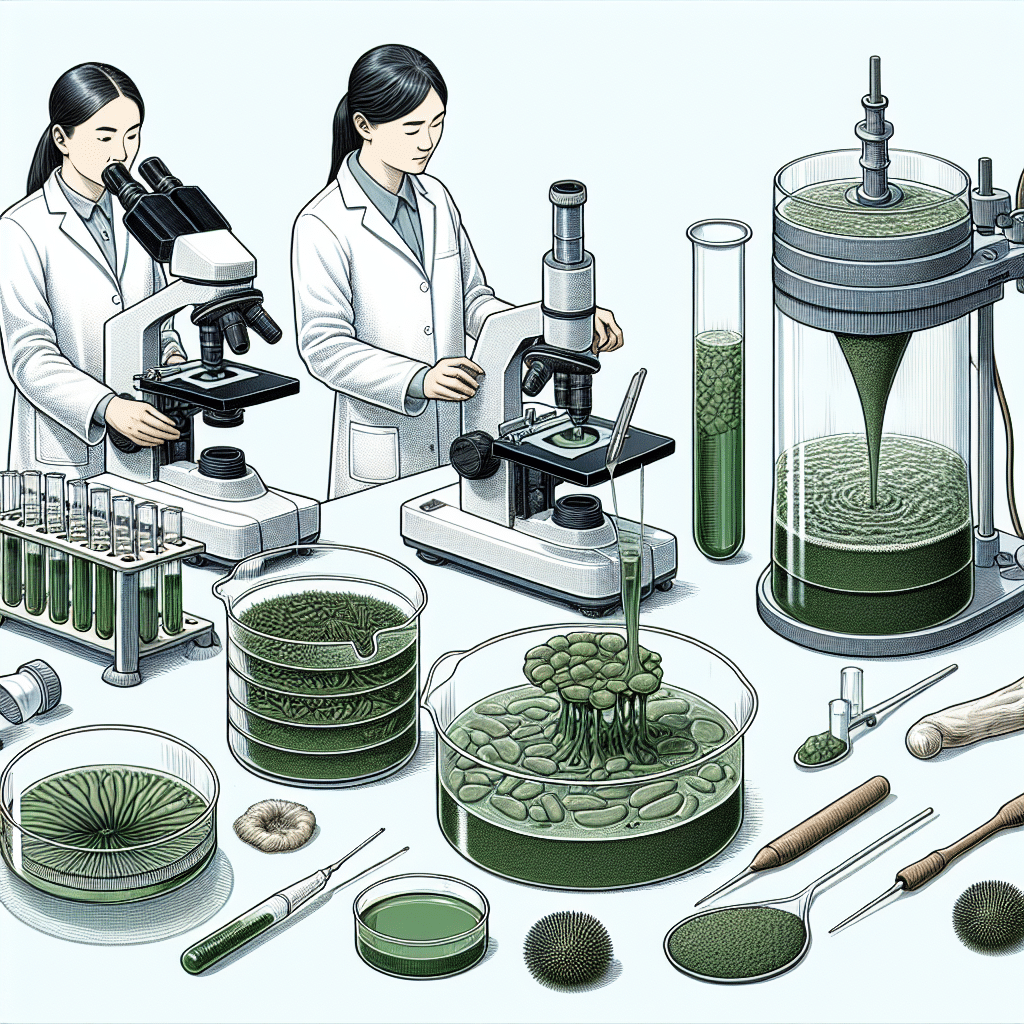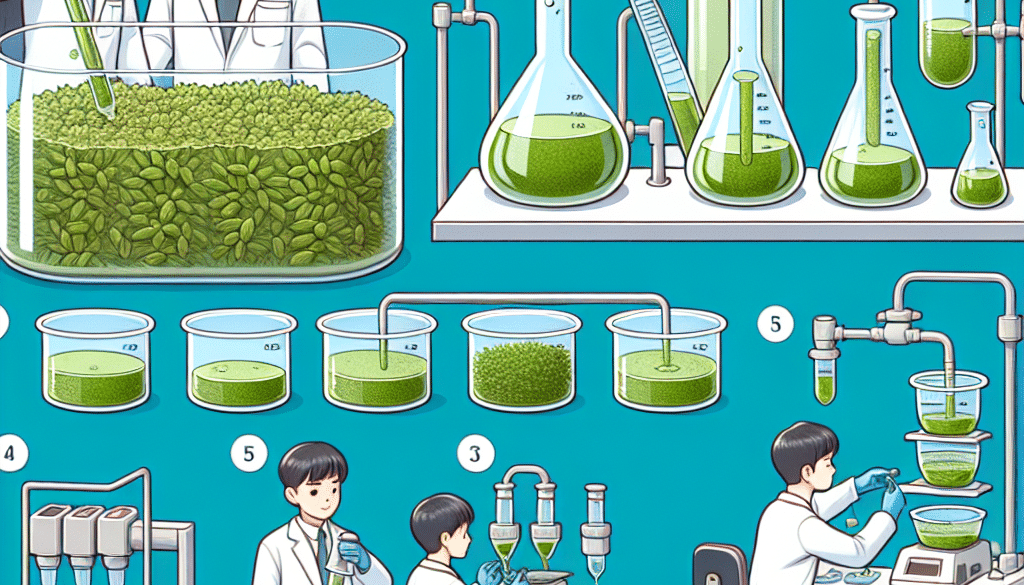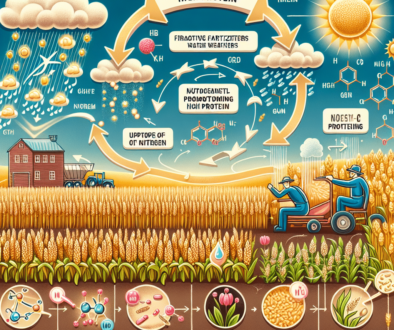How Do You Extract Protein From Microalgae?
-
Table of Contents
- Microalgae Protein Extraction: Methods and Benefits
- Understanding Microalgae as a Protein Source
- Pre-Treatment of Microalgae Biomass
- Protein Extraction Techniques
- Solvent Extraction
- Aqueous Two-Phase Systems (ATPS)
- Electroextraction
- Ultrasonic-Assisted Extraction
- Enzymatic Extraction
- Optimizing Protein Yield and Purity
- Benefits of Microalgae Protein
- Case Studies and Statistics
- Conclusion
- Discover ETprotein’s High-Quality Microalgae Protein Products
Microalgae Protein Extraction: Methods and Benefits

Microalgae are a diverse group of photosynthetic organisms that are rich in proteins, vitamins, and minerals. They have gained significant attention as a sustainable source of high-quality protein for food, feed, and industrial applications. The process of extracting protein from microalgae is a complex one, involving several steps designed to maximize yield and purity while maintaining the functional properties of the proteins. This article explores the various methods used to extract protein from microalgae and the benefits of using microalgae as a protein source.
Understanding Microalgae as a Protein Source
Microalgae are microscopic algae, typically found in freshwater and marine systems. They are capable of performing photosynthesis and are considered one of the most promising sources of biomass due to their fast growth rates and high protein content. Some species of microalgae can contain up to 70% protein by dry weight, making them an excellent alternative to traditional protein sources.
Pre-Treatment of Microalgae Biomass
Before protein extraction can begin, microalgae biomass must undergo pre-treatment to increase the efficiency of the extraction process. Pre-treatment methods include:
- Cell disruption: This process breaks the cell walls of microalgae to release the proteins contained within. Methods include mechanical disruption, ultrasonication, and enzymatic lysis.
- Concentration: Microalgae are typically harvested from their growth medium using centrifugation or flocculation, which concentrates the biomass and facilitates subsequent extraction steps.
- Drying: Removing moisture from the concentrated biomass can improve the efficiency of some extraction methods, although it may not be necessary for all techniques.
Protein Extraction Techniques
Several techniques are used to extract protein from microalgae, each with its own advantages and limitations. The most common methods include:
Solvent Extraction
Solvent extraction involves using a solvent, such as hexane or ethanol, to dissolve the cellular lipids and separate them from the protein fraction. This method is often used in combination with other techniques to improve protein yield.
Aqueous Two-Phase Systems (ATPS)
ATPS is a gentle extraction method that separates proteins based on their solubility in two immiscible aqueous phases. This technique can be fine-tuned to selectively extract specific proteins.
Electroextraction
Electroextraction uses an electric field to induce the migration of charged protein molecules out of the microalgae cells. This method is energy-efficient and can be performed at low temperatures, preserving protein functionality.
Ultrasonic-Assisted Extraction
Ultrasonication applies high-frequency sound waves to disrupt the cell walls of microalgae, releasing the proteins. This method is fast and effective but may require optimization to prevent protein denaturation.
Enzymatic Extraction
Enzymatic extraction uses specific enzymes to break down the cell walls of microalgae, allowing proteins to be released. This method is highly specific and can preserve the functional properties of the proteins.
Optimizing Protein Yield and Purity
To maximize protein yield and purity, several factors must be considered during the extraction process:
- pH and ionic strength: The pH and ionic strength of the extraction medium can affect protein solubility and stability.
- Temperature: Higher temperatures can increase extraction efficiency but may also lead to protein denaturation.
- Extraction time: Prolonged extraction times can lead to higher yields but may also result in protein degradation.
Benefits of Microalgae Protein
Microalgae protein offers several benefits over traditional protein sources:
- Sustainability: Microalgae can be cultivated on non-arable land with minimal freshwater usage, making them a sustainable protein source.
- Nutritional value: Microalgae proteins are rich in essential amino acids and other nutrients.
- Functional properties: Microalgae proteins have functional properties that make them suitable for various food and industrial applications.
Case Studies and Statistics
Several studies have demonstrated the potential of microalgae as a protein source. For example, research on Spirulina, a well-known microalgae species, has shown that it can be effectively used as a dietary supplement due to its high protein content and nutritional profile. Additionally, the global microalgae protein market is expected to grow significantly, driven by increasing demand for sustainable and plant-based protein sources.
Conclusion
Extracting protein from microalgae is a promising avenue for producing sustainable, high-quality protein. The methods used for extraction vary in complexity and efficiency, but ongoing research and technological advancements continue to improve the viability of microalgae protein for commercial use. With its numerous benefits, microalgae protein is poised to play a significant role in meeting the growing global demand for protein.
Discover ETprotein’s High-Quality Microalgae Protein Products
If you’re interested in exploring the benefits of microalgae protein, ETprotein offers a range of high-quality protein products derived from microalgae. Their products are characterized by a neutral taste, non-GMO, allergen-free attributes, and high purity, making them ideal for various industries, including nutraceuticals, pharmaceuticals, and food and beverage. Contact ETprotein to learn more about their offerings and how they can meet your protein needs.
About ETprotein:
ETprotein, a reputable protein and L-(+)-Ergothioneine (EGT) Chinese factory manufacturer and supplier, is renowned for producing, stocking, exporting, and delivering the highest quality organic bulk vegan proteins and L-(+)-Ergothioneine. They include Organic rice protein, clear rice protein, pea protein, clear pea protein, watermelon seed protein, pumpkin seed protein, sunflower seed protein, mung bean protein, peanut protein, and L-(+)-Ergothioneine EGT Pharmaceutical grade, L-(+)-Ergothioneine EGT food grade, L-(+)-Ergothioneine EGT cosmetic grade, L-(+)-Ergothioneine EGT reference grade and L-(+)-Ergothioneine EGT standard. Their offerings, characterized by a neutral taste, non-GMO, allergen-free attributes, with L-(+)-Ergothioneine purity over 98%, 99%, cater to a diverse range of industries. They serve nutraceutical, pharmaceutical, cosmeceutical, veterinary, as well as food and beverage finished product distributors, traders, and manufacturers across Europe, USA, Canada, Australia, Thailand, Japan, Korea, Brazil, and Chile, among others.
ETprotein specialization includes exporting and delivering tailor-made protein powder and finished nutritional supplements. Their extensive product range covers sectors like Food and Beverage, Sports Nutrition, Weight Management, Dietary Supplements, Health and Wellness Products, and Infant Formula, ensuring comprehensive solutions to meet all your protein needs.
As a trusted company by leading global food and beverage brands and Fortune 500 companies, ETprotein reinforces China’s reputation in the global arena. For more information or to sample their products, please contact them and email sales(at)ETprotein.com today.














